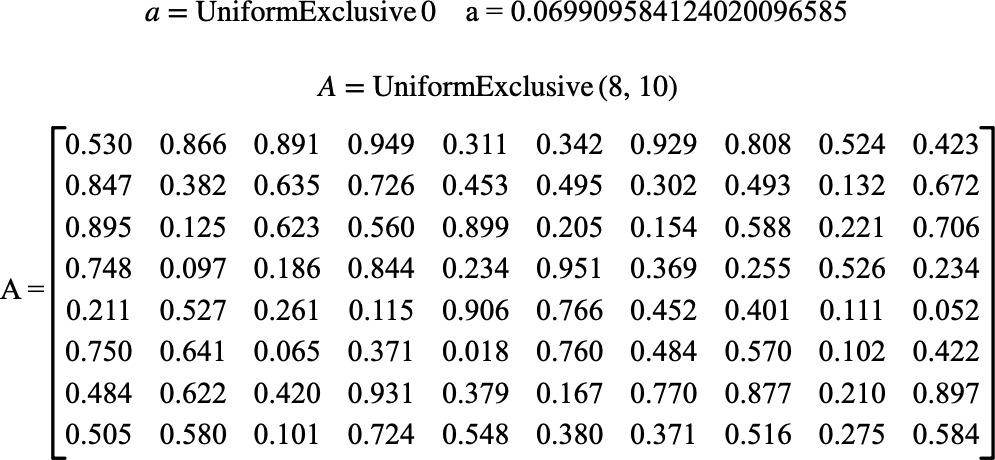\(\text{UniformExclusive}\)¶
You can use the \(\text{UniformExclusive}\) function to calculate one or more random variates in a uniform distribution over the range (0, 1).
You can use the \uniformex backslash command to insert this function.
The following variants of this function are available:
\(\text{real } \text{UniformExclusive} \left ( \text{<any value>} \right )\)
\(\text{real matrix } \text{UniformExclusive} \left ( \text{<number rows>}, \text{<number columns>} \right )\)
The single parameter version requires a single parameter, \(\text{<any value>}\), that is ignored. The single parameter version returns a single random value.
The two parameter version accepts \(\text{<number rows>}\) and \(\text{<number columns>}\) parameters that determine the size of the real matrix to be returned. Values in the matrix will be in the range (0, 1).
Figure 214 shows the basic use of the \(\text{UniformExclusive}\) function.

Figure 214 Example Use Of The UniformExclusive Function¶
